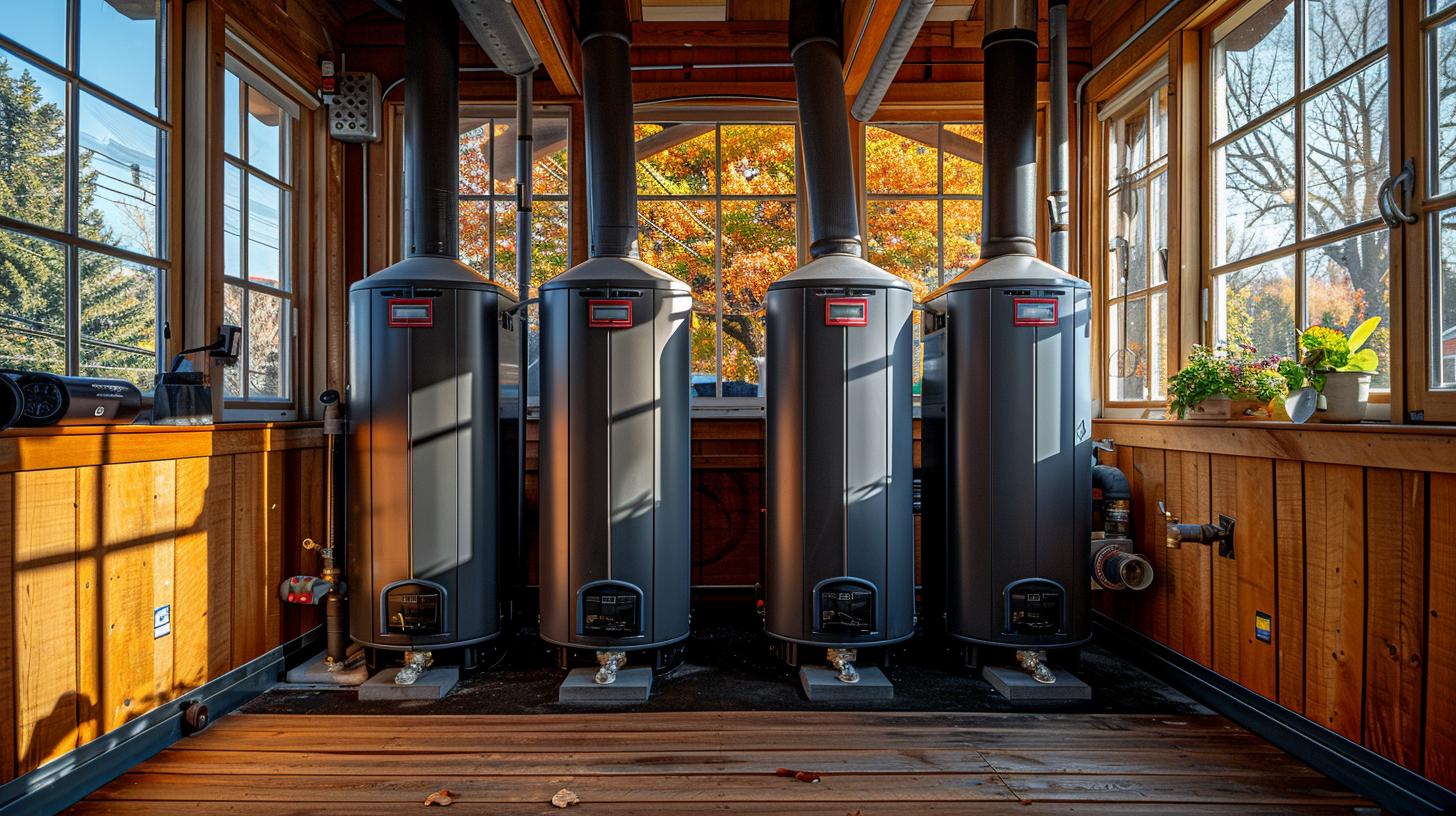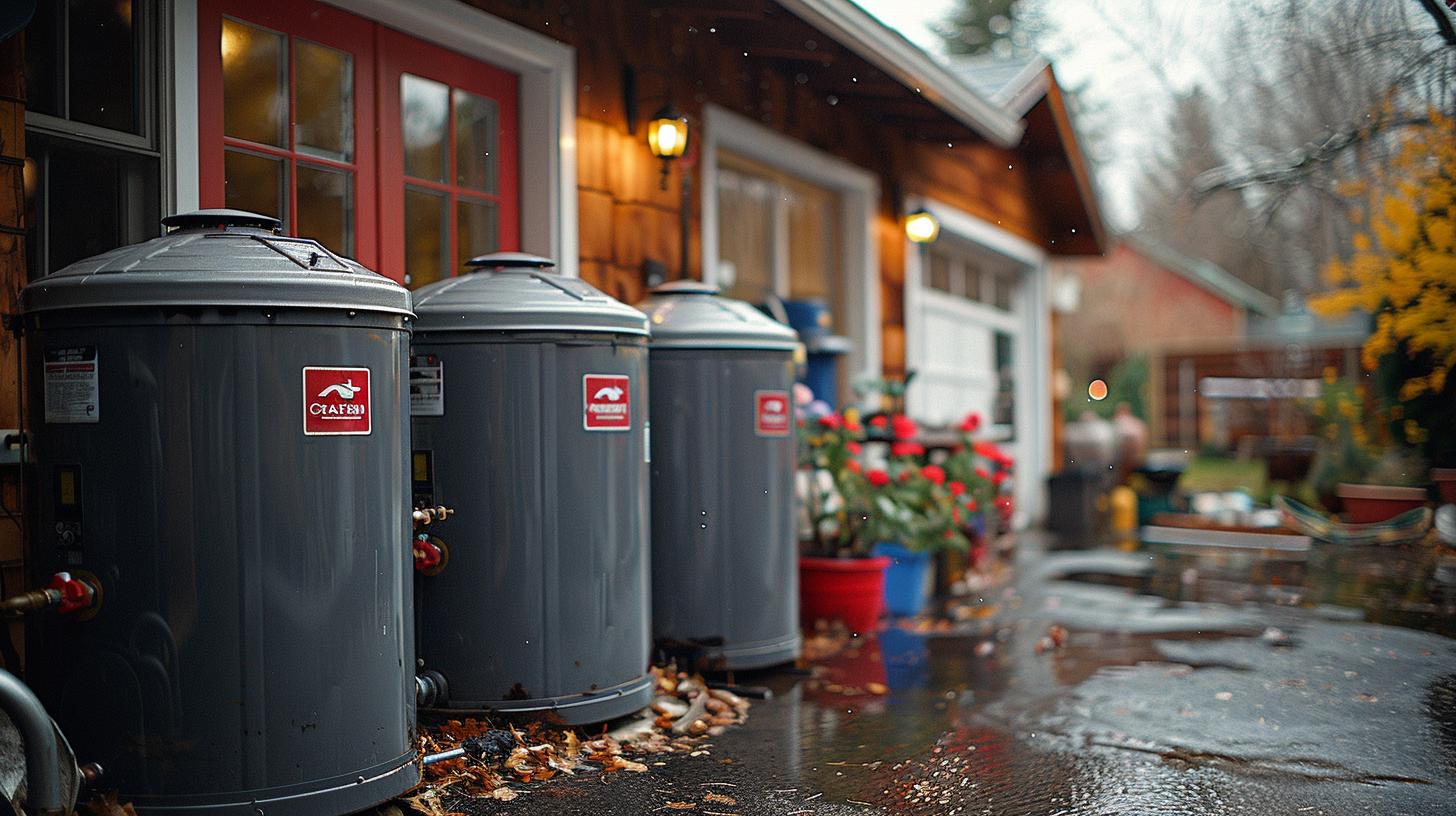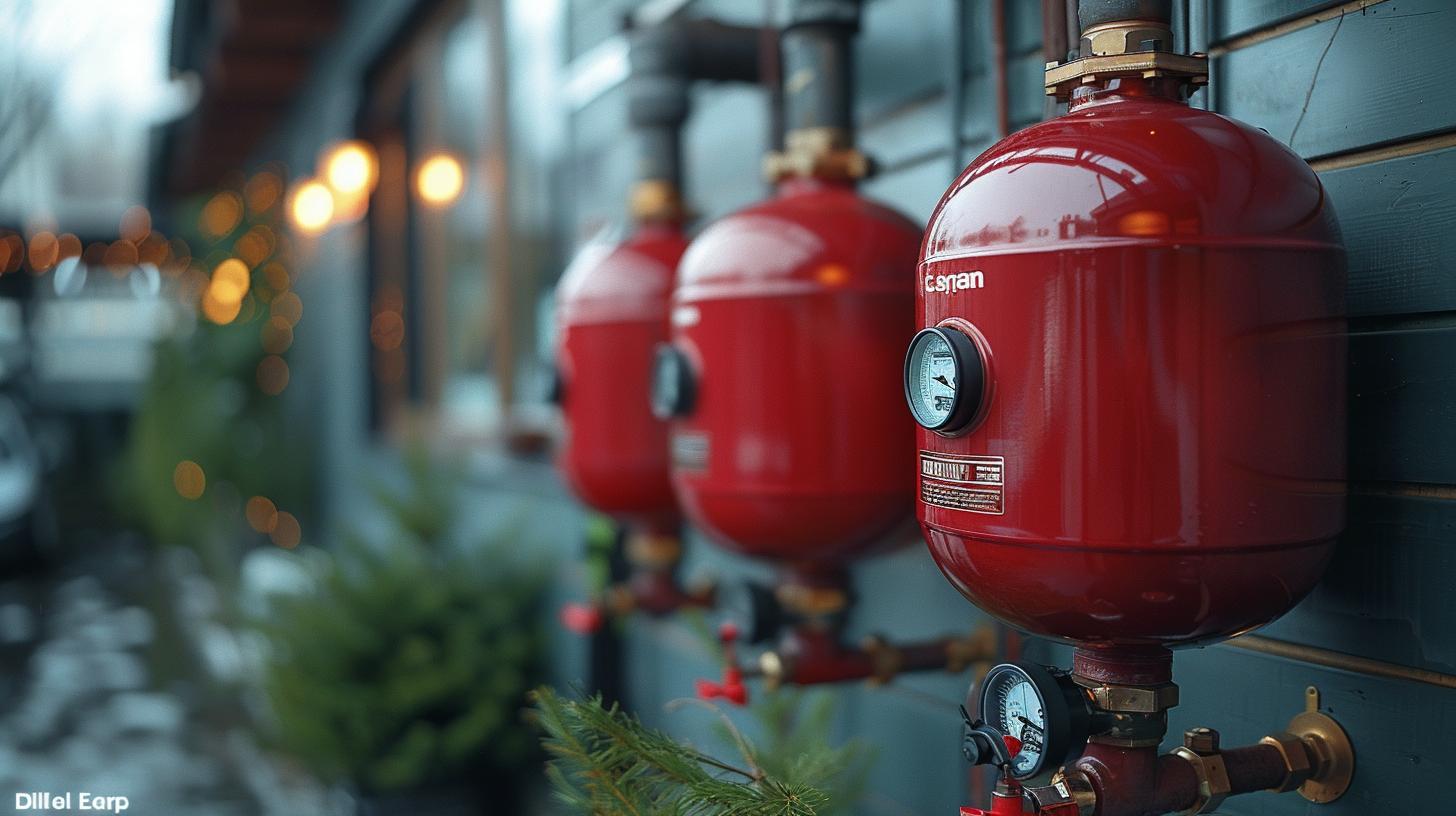As temperatures dip in Kuna, the reliance on a well-functioning furnace becomes undeniable. Staying warm and comfortable during the colder months is not just about comfort but also about safety. Recognizing this, it’s essential to be prepared to address any issues your furnace might encounter promptly.
This blog post aims to equip Kuna homeowners with the knowledge to troubleshoot common furnace problems effectively. From understanding the basic operation of your home’s heating system to identifying when it’s time for professional heater repair in Kuna, we’ve got you covered.
The significance of maintaining a well-functioning furnace cannot be overstated, especially as we navigate through the seasonal shifts that test our home’s heating capabilities. Understanding your furnace-whether gas, electric, or oil-is the first step toward ensuring it runs smoothly throughout its neediest months.
This article delves deep into not only the types of furnaces you might find in Kuna homes but also their main components and how these work together to keep you warm. Recognizing signs of malfunction early can often mean simpler fixes and fewer disruptions to your comfort and routine.
Moreover, we understand that encountering a furnace problem can be daunting for many homeowners. Often, the first question is whether it’s something minor you can fix yourself or if it signals a more significant issue requiring professional attention.
To this end, we lay out clear guidelines on common issues such as insufficient heat production, strange noises, and erratic cycling between on and off states – each with potential causes and DIY troubleshooting tips before concluding professional heater repair in Kuna is necessary. With practical advice rooted in safety and efficiency, our goal is to empower you with keen insight into maintaining your home’s warmth without unnecessary hassle or expense.
Understanding Your Furnace
Understanding how your furnace operates is crucial to troubleshooting issues when they arise, especially in areas like Kuna where the weather necessitates a dependable heating system during colder months. Furnaces, while varying in type and complexity, all share similar core components that work in unison to keep your home warm. Familiarizing yourself with these basics can empower homeowners to identify potential problems early on.
Furnaces in Kuna homes mainly consist of three types: gas, electric, and oil. Each type uses different methods to generate heat but typically involves burning fuel or using electricity to warm air or water, subsequently distributing warmth throughout the home.
Key components of these systems include the thermostat, which controls temperature; the blower motor that circulates air; and the heat exchanger, an essential part that heats up air without directly exposing it to combustion gases. These elements are fundamental to understanding how furnaces deliver consistent heat and what may go wrong when they malfunction.
| Type of Furnace | Key Component |
|---|---|
| Gas | Heat Exchanger |
| Electric | Heating Elements |
| Oil | Burner |
Recognizing these components’ roles can simplify diagnosing common issues before they escalate into significant problems requiring professional heater repair in Kuna. Whether it’s ensuring the thermostat is properly set or identifying if the blower motor is functioning correctly, a basic understanding provides a foundation for effective troubleshooting. This knowledge not only helps prevent minor issues from becoming major but also ensures homeowners can accurately describe problems when seeking professional assistance, facilitating more efficient repairs.
Common Furnace Problems and Symptoms
Understanding the common furnace problems and their accompanying symptoms is essential for Kuna homeowners, especially as the colder months approach. Being able to identify these issues early on can save a lot of discomfort and potentially expensive repairs down the line. Some problems might require a simple DIY fix, while others could necessitate professional heater repair in Kuna. Let’s delve into several frequent issues that you might encounter with your home’s furnace.
Firstly, one of the most common complaints is no heat or insufficient heat being produced by the furnace. This can be due to various reasons including a malfunctioning thermostat, clogged filters, or issues with the gas supply for gas furnaces. Another sign to look out for is strange noises coming from your heating system, such as banging, whining, or groaning sounds.
These noises can indicate mechanical problems like loose belts or components in need of lubrication. Continuous running of the blower or the furnace cycling between on and off states too frequently are also prevalent issues. These could signify a problem with the thermostat setting, air circulation, or even more complex internal faults.
Troubleshooting these symptoms effectively requires a basic understanding of how your furnace operates and what each symptom could potentially mean. For instance:
- No heat production might require checking if the thermostat is set high enough to call for heat, ensuring that all switches connected to the furnace are turned on, and verifying that the pilot light (in gas furnaces) is lit.
- Strange noises often demand a closer inspection to pinpoint whether it’s a mechanical issue that can be resolved with tightening or lubrication.
- Continuous running or frequent cycling calls for checking the air filter’s cleanliness and ensuring all registers are open and not obstructed.
| Common Problem | Possible Cause |
|---|---|
| No Heat/Insufficient Heat | Malfunctioning thermostat, Clogged filters, Gas supply issues |
| Strange Noises | Loose belts/components needing lubrication |
| Continuous Blower Operation/Frequent Cycling | Thermostat settings/Air circulation problems/Internal faults |
When faced with any of these symptoms, performing some basic checks yourself can help determine if you’re dealing with a minor issue that’s easily corrected or if you need to call in specialists for heater repair kuna. Remember that while some fixes are within reach for handy homeowners, safety should always come first.

Understanding when to proceed with DIY troubleshooting and when it’s time to engage professionals will ensure you keep your home warm safely throughout winter without exposing yourself to unnecessary risks.
DIY Troubleshooting Tips Before Calling for Heater Repair in Kuna
If your Kuna home’s furnace is acting up, it’s natural to feel a rush of frustration and concern, especially during the colder months. Before you pick up the phone to call for professional heater repair in Kuna, there are several troubleshooting steps you can undertake yourself.
These simple checks and adjustments can often resolve minor issues or at least help you better understand the problem before seeking professional assistance. Remember, safety first: ensure your furnace is off before attempting any DIY inspections or fixes.
Check Your Thermostat Settings
One of the most common reasons for a furnace not functioning correctly is an issue with the thermostat settings. It might sound basic, but ensuring your thermostat is set to “heat” and not “cool” can sometimes be overlooked. Verify that the temperature setting is higher than the current room temperature.
Additionally, if your thermostat runs on batteries, check that they are not expired. An improperly functioning thermostat can lead to inadequate heating or cause your furnace not to turn on at all.
Inspecting and Replacing the Air Filter
A dirty or clogged air filter restricts airflow, which can significantly impact your furnace’s efficiency and ability to heat your home properly. Homeowners should inspect their furnace filters every month during peak usage times and replace them as needed; typically every 90 days for standard filters. A clean filter not only helps in preventing furnace problems but also promotes better indoor air quality in your home.
Ensuring Proper Ventilation
Blocked or closed vents throughout your home can cause insufficient heating and force your furnace to work harder than necessary. Take a walk through each room to ensure all vents are open and free from obstructions like furniture, curtains, or rugs. In addition to checking the internal vents, verify that the exterior exhaust vent is clear of debris, snow, or ice buildup; this is especially relevant for high-efficiency furnaces that vent out at ground level.
By performing these simple DIY troubleshooting tips, you not only become more familiar with how your heating system operates but might also resolve some straightforward issues without needing professional intervention.
However, if after these steps your furnace still exhibits problems such as strange noises, constant cycling without adequately heating the home or if it fails to start entirely – it may be time to call for heater repair kuna professionals who possess the necessary skills and equipment to safely correct more complex issues.
When to Call for Professional Heater Repair in Kuna
Identifying when a furnace issue requires the expertise of a professional can be daunting for Kuna homeowners. However, there are certain situations where trying to fix the problem yourself could end up causing more harm than good, not to mention the potential safety risks involved. This guides aims to outline several scenarios and warning signs indicating it’s time to seek out professional heater repair services in Kuna.
Signs You Need Professional Assistance
One clear indicator that professional help is needed is when the furnace fails to start. Before concluding that a professional service call is necessary, ensure you’ve checked the basics like power supply, thermostat settings, and the condition of your air filter.
If after troubleshooting these components your furnace still won’t start, it’s time to call for expert assistance. Another red flag is the presence of a gas smell, which could indicate a dangerous leak and requires immediate attention from professionals who specialize in heater repair in Kuna.
Persistent unusual noises coming from your furnace can also point to significant issues. Sounds such as banging, whining, or screeching often suggest mechanical problems that could range from loose belts to malfunctioning blower motors. These are not issues that should be addressed without proper training and tools; attempting DIY repairs in these cases may lead to further damage or even pose safety hazards.
When Efficiency Concerns Demand Professional Evaluation
An often-overlooked sign that it’s time for professional assistance is a noticeable decrease in heating efficiency. If your energy bills have spiked without a corresponding increase in usage or if areas of your home are heating unevenly, underlying problems with your furnace’s operation might be responsible.
While regular maintenance such as changing filters can improve efficiency to some degree, persistent problems may need an expert diagnosis. In some cases, component wear or ductwork issues could be compromising your system’s performance, both of which require specialized skills and knowledge to rectify effectively.
Seeking out heater repair services in Kuna at the first sign of major troubles not only helps ensure your family remains comfortable throughout colder months but also contributes to extending the lifespan of your heating system. Additionally, involving professionals early on can prevent minor issues from escalating into more severe problems that demand costly repairs or even complete replacement later on.
Recognizing when it’s time to call experienced technicians is crucial in maintaining both safety and efficiency within your household heating system.
How to Find a Reliable Furnace Repair Service in Kuna
Finding a trustworthy furnace repair service in Kuna demands diligence and an understanding of what makes a technician skilled and reliable. The goal is to hire a service that not only resolves your immediate heater issues but also ensures the longevity and efficiency of your furnace system. Start by seeking out technicians or companies with a solid reputation in Kuna.

Word-of-mouth recommendations from friends, family, or neighbors can be incredibly valuable. These personal accounts of service quality, timeliness, and professionalism provide insight into what you can expect.
In addition to personal recommendations, online reviews and ratings on trusted consumer websites can offer a broader perspective on potential heater repair services in Kuna. Look for patterns in customer feedback; consistent positive reviews about timely service, clear communication, and transparent billing practices are good indicators of reliability.
Conversely, repeated complaints about the same issues might be red flags worth considering. Keep in mind that one or two negative reviews do not always tell the whole story, so look for overall trends rather than isolated grievances.
Another crucial aspect when searching for a reliable furnace repair service is verifying qualifications and credentials. A reputable service provider should have technicians who are licensed and insured-a safeguard that protects both the homeowner and the workers on site. Don’t hesitate to ask for proof of licensure; it ensures you’re entrusting your home’s heating system to individuals who have met the necessary professional standards and training criteria.
Additionally, experienced technicians will likely have encountered a wide range of furnace problems, making them well-equipped to handle complex issues beyond straightforward heater repair tasks. By taking these steps-seeking recommendations, reading through reviews thoroughly, and confirming qualifications-you’ll significantly increase your chances of finding a dependable furnace repair service in Kuna that can efficiently address your needs while offering peace of mind throughout the process.
Preparing for the Technician’s Visit
Before a technician arrives for heater repair in Kuna, taking certain preparatory steps can ensure the visit is as efficient and effective as possible. Being well-prepared not only aids the technician in quickly diagnosing and fixing the issue but can also save time and potentially reduce the cost of the repair. Here’s what Kuna homeowners can do before the repair service arrives at their door:
- Clear Access to Your Furnace: Make sure there’s a clear path to the furnace. Remove any personal belongings, furniture, or other obstacles that might hinder access to your heating system. This enables the technician to get straight to work without having to navigate through clutter, saving time and preventing potential injuries or damages.
- Note Down Symptoms and Odd Behaviors: Before the technician’s visit, take note of any odd behaviors or symptoms your furnace has been exhibiting. Details such as when the problem started, any strange noises (banging, whistling), unusual smells, or if it’s been cycling too frequently can provide valuable clues to what might be wrong. Listing these symptoms down ensures you won’t forget to mention important details during the technician’s assessment.
- Prepare Your Furnace’s History: If possible, have information available about your furnace’s age, brand, model, and repair history. This might include warranty information or records of past services and repairs. Information on when filters were last changed or if new parts were installed can help paint a clearer picture for the technician. Providing this information upfront can drastically cut down diagnostic time.
Taking these simple steps prior to a professional’s arrival for heater repair kuna not only makes their job easier but also demonstrates a homeowner’s proactive role in maintaining their furnace’s health. It sets up a smoother operation from diagnosis to repair which contributes significantly towards quick resolutions of heating problems in Kuna homes.
Maintaining Your Furnace Post-Repair
After your furnace has been expertly repaired by a professional heater repair service in Kuna, maintaining its efficiency and prolonging its lifespan becomes your next priority. Regular maintenance not only ensures that your heating system runs smoothly during the colder months but also helps to avoid future breakdowns. Here are some essential tips and strategies for keeping your furnace in top condition post-repair.
Firstly, adhere to a scheduled maintenance plan. This usually includes:
- Regular Filter Changes: The air filter should be replaced or cleaned every 1-3 months, depending on usage and the type of filter your furnace uses. A clean filter improves air quality in your home and prevents the furnace from working too hard, which can lead to wear and tear.
- Yearly Professional Inspections: Even if your furnace seems to be running smoothly, an annual check-up by a certified technician can catch minor issues before they turn into major problems. These inspections typically cover cleaning the furnace, checking for leaks or damage, testing safety features, and ensuring that it’s running efficiently.
Another crucial aspect of post-repair maintenance is paying attention to any signs of potential issues. If you notice strange noises coming from the furnace, inconsistent heating, or any other unusual symptoms, it might indicate that something is amiss. Addressing these signs early can prevent more extensive damage later on.
Lastly, consider upgrading to a programmable thermostat if you haven’t already done so. Programmable thermostats allow you to set different temperatures for various times of the day automatically. This not only makes it easier for you to maintain a comfortable temperature in your home but also reduces strain on the furnace due to constant manual adjustments and can lead to energy savings over time.
Maintaining your furnace properly after a repair is essential for ensuring its longevity and efficiency. By following these straightforward steps-scheduling regular maintenance checks, being vigilant about potential warning signs, regularly changing filters-and considering an upgrade to more efficient thermostat controls, you can help ensure that your Kuna home remains warm and cozy throughout the chilling winters without unnecessary interruptions or additional heater repair needs.

Conclusion
In conclusion, addressing furnace problems in a timely and efficient manner is crucial for Kuna homeowners, especially given the cold spells that can sweep through the area. This blog post has walked you through the basics of how furnaces operate, common issues that may arise, and straightforward troubleshooting tips that you can perform before reaching out to professionals for heater repair in Kuna.
Moreover, understanding when to call for professional assistance is key to ensuring your home remains a warm and safe environment during those chilly months.
We’ve also discussed how to select a dependable furnace repair service in Kuna and prepare for their visit, which are critical steps in resolving your furnace issues effectively. Seeking experienced technicians with the right qualifications ensures that any underlying problems with your heating system are diagnosed accurately and resolved promptly. Also, by being well-prepared for the technician’s visit, you help streamline the repair process, leading to quicker restoration of warmth and comfort in your home.
Lastly, maintaining your furnace post-repair cannot be overstated. Regular maintenance not only prolongs the lifespan of your heating system but also enhances its efficiency and reliability. Adopting a proactive approach toward furnace care, such as scheduling annual inspections and changing filters regularly, will significantly reduce emergencies.
Remember, keeping your furnace in top condition is not just about ensuring comfort; it’s also about safeguarding the health and safety of your household throughout the year. So whether you’re dealing with a minor glitch or require urgent heater repair in Kuna, don’t hesitate to take action – your home’s warmth depends on it.
Frequently Asked Questions
What to Do When the Heater Is Not Working?
When facing a situation where the heater is not working, the first action to take is to check if the thermostat is set correctly. It’s critical to ensure that it’s on the appropriate setting and that the temperature is high enough to trigger the heating. Next, inspect any visible fuses or circuit breakers to see if they have tripped or blown.
If everything electrical seems in order, examining the furnace filter for blockages that might prevent airflow can be helpful. Often, a dirty filter can impede performance significantly. Should these steps not resolve the issue, it may be time to contact a professional HVAC technician as the problem could be more complex and require specialized knowledge or parts for repair.
How Do You Fix a Furnace That Is Not Heating?
Fixing a furnace that isn’t heating starts with some basic troubleshooting. Initially, verify that the thermostat settings are correct and that it signals heat demand properly by adjusting its temperature above room level. Then move on to check your furnace’s filter; a clogged filter can restrict airflow and hinder heating performance, so replacing or cleaning it as necessary can sometimes solve the problem.
Ensure there’s power to your furnace: check electrical panels for tripped breakers or blown fuses connected to your heating system components. It’s also wise to inspect the pilot light in older furnaces or ignition systems in newer models – these elements being out could prevent furnace operation altogether. If none of these steps rectify the issue, there may be internal problems like faulty sensors or motor issues requiring professional attention.
Why Is My Air Working but Not My Heat?
If you find that your air system is working but not producing heat, several factors could be at play. An improperly set thermostat can mistakenly keep the system in cooling mode instead of heating; ensuring it’s set correctly is crucial.
The heat pump outside may also be malfunctioning due to issues like refrigerant leaks, dirty filters or coils which reduce its efficiency in generating warmth—a professional service person can diagnose such problems correctly. Additionally, some modern systems use zone controls which might be incorrectly configured or malfunctioning, leading only to air circulation without heating specific zones in your home.
Why Is My Heater Not Kicking on in My House?
When a heater does not kick on in a house, there are several potential causes at root which need checking into systematically. Early checks should involve examining if there’s proper electrical power supplied and whether thermostatic controls are accurately set for heating needs—that includes ensuring batteries aren’t dead if it’s battery-operated.
Inspect whether circuit breakers related to the heater have been tripped or if any switches have been inadvertently turned off Sufficient airflow is paramount too; thus verifying filters are clean and vents unobstructed becomes essential hereafter At this juncture if solutions aren’t found manually resetting your heater according to manufacturer instructions might be needed—or reaching out for HVAC expert help should complexities persist beyond simple fixes.
How Do I Reset My Heater?
Resetting your heater often involves locating a reset button which when pressed helps clear any alerts or system errors causing dysfunction Essentially after determining nothing obstructs unit operation like blocked filters shift focus onto safety features inherent within device designs most commonly including this reset mechanism Typically powering down equipment from mains electricity waiting around 30 seconds before turning back again enables internal circuits reset Once powered resume attempting pressing displayed reset button firmly holding briefly This act resets existing programs potentially clearing minor bugs thwarting heater functioning Check user manual provided specifics vary model-to-model
Where Is the Furnace Reset Button?
The furnace reset button location varies depending upon both age type furnace generally though one could expect find part housing motor roughly near blower compartment face panel Older units tend feature prominently external areas convenience while newer models may integrate within interior accessible removing certain access panels In essence designed offer quick means rebooting unit erroneous operations detecting unsafe conditions Always advise caution utilizing reference equipment documentation specific instructions handling safely effectively





